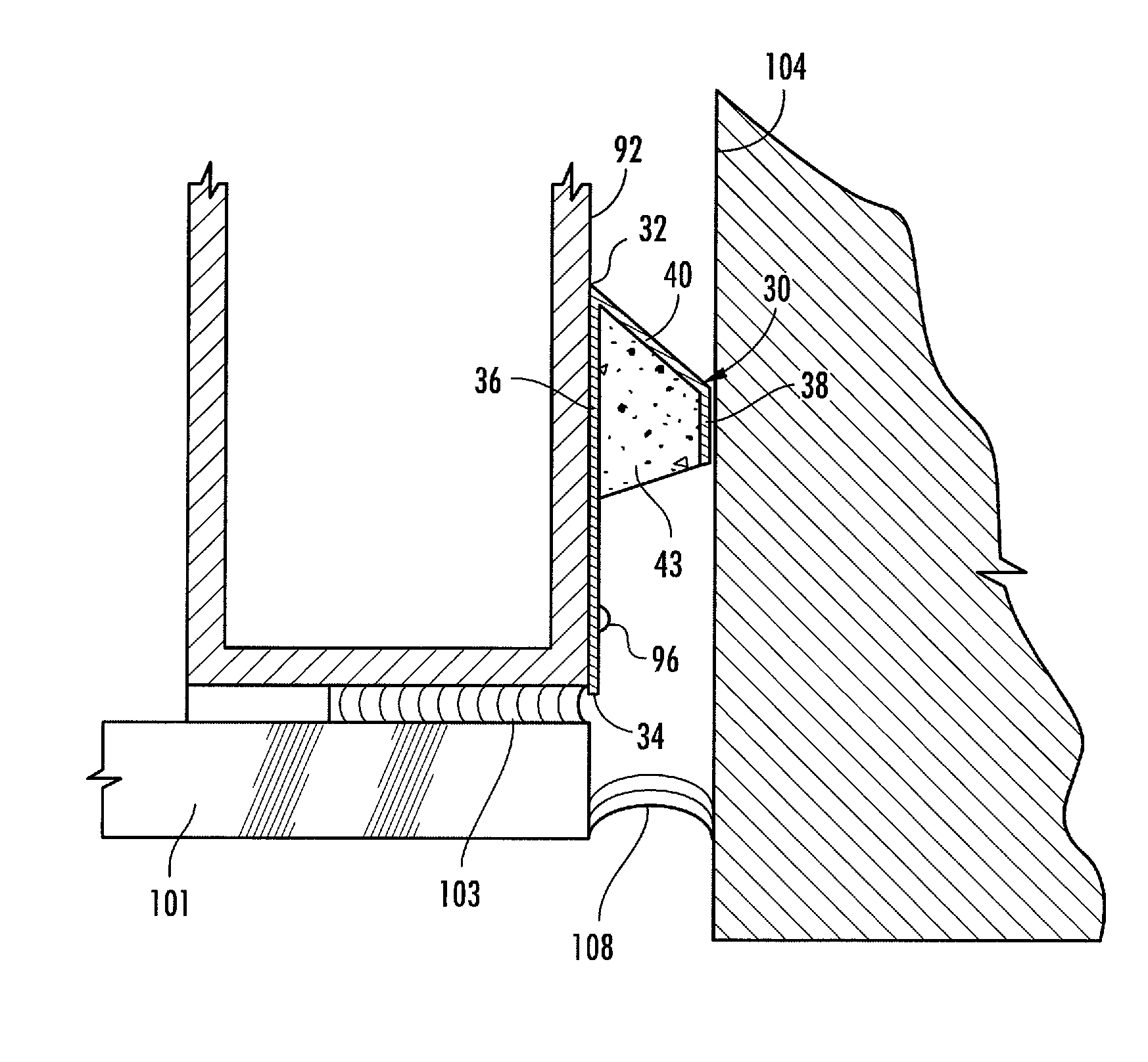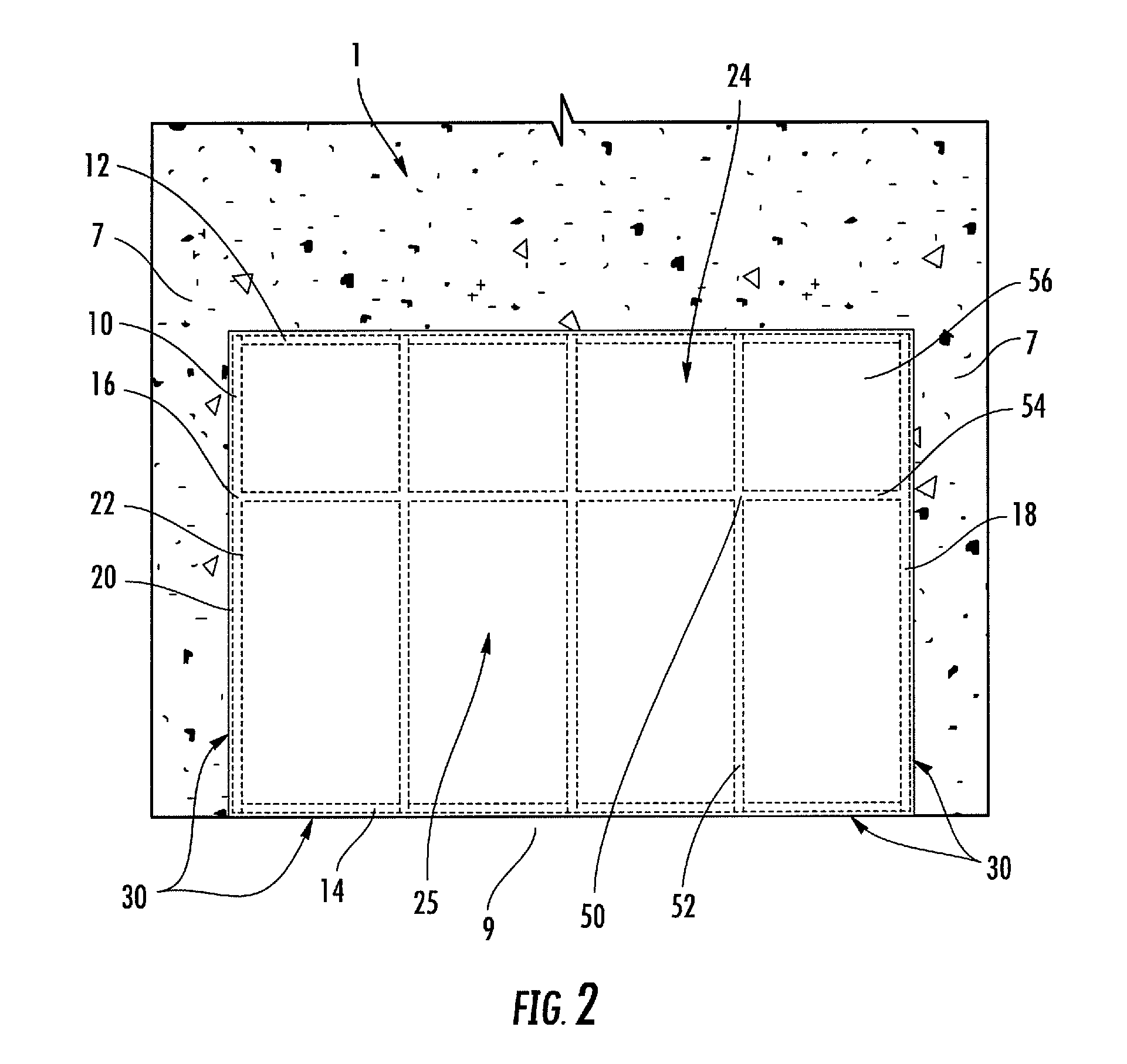Window structure with expansion member for inhibiting flood waters
a technology of expansion member and window structure, which is applied in the direction of door/window protective device, frame fastening, rain/draught deflector, etc., can solve the problem of not being able to predict how much water a flooding event will produce, and the area being susceptible to flooding may chang
- Summary
- Abstract
- Description
- Claims
- Application Information
AI Technical Summary
Benefits of technology
Problems solved by technology
Method used
Image
Examples
Embodiment Construction
[0064]Detailed embodiments of the instant invention are disclosed herein, however, it is to be understood that the disclosed embodiments are merely exemplary of the invention, which may be embodied in various forms. Therefore, specific functional and structural details disclosed herein are not to be interpreted as limiting, but merely as a basis for the claims and as a representation basis for teaching one skilled in the art to variously employ the present invention in virtually any appropriately detailed structure.
[0065]Referring now to FIGS. 1-30, wherein like components are numbered consistently throughout, an improvement in window construction, herein known as a flood barrier system 1. The system 1 illustrated in FIGS. 1-2 comprises of a frame member 10 and a mechanical seal 30, the words used interchangeably in this application. The flood barrier system 1 is constructed to adapt into a cavity or window opening 11 in a building structure. The frame 10 includes a top wall 12, a b...
PUM
 Login to View More
Login to View More Abstract
Description
Claims
Application Information
 Login to View More
Login to View More - R&D
- Intellectual Property
- Life Sciences
- Materials
- Tech Scout
- Unparalleled Data Quality
- Higher Quality Content
- 60% Fewer Hallucinations
Browse by: Latest US Patents, China's latest patents, Technical Efficacy Thesaurus, Application Domain, Technology Topic, Popular Technical Reports.
© 2025 PatSnap. All rights reserved.Legal|Privacy policy|Modern Slavery Act Transparency Statement|Sitemap|About US| Contact US: help@patsnap.com



